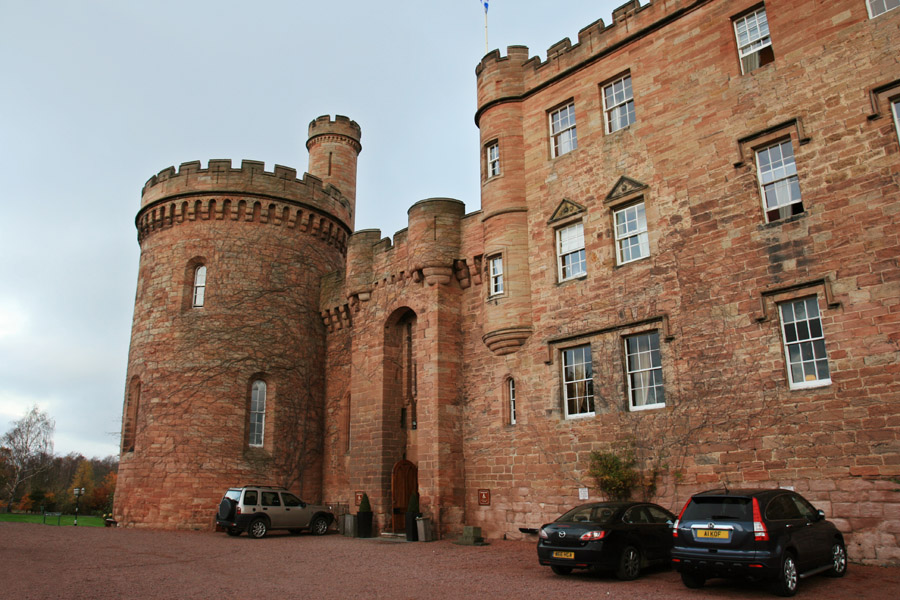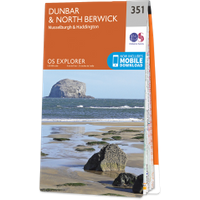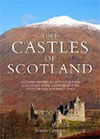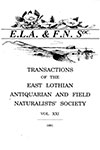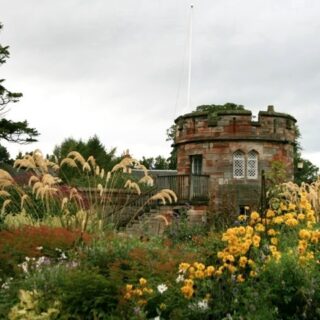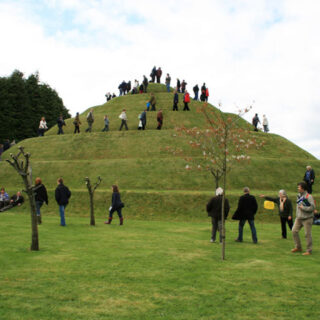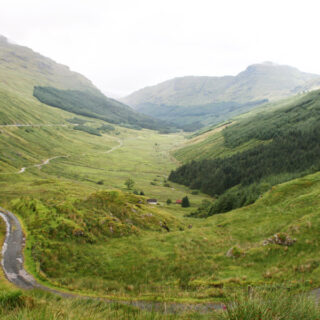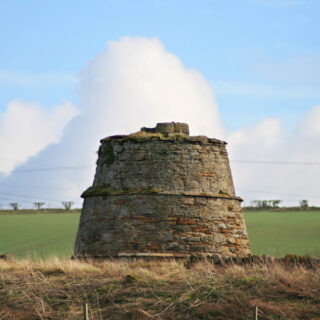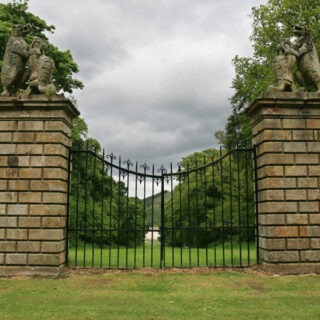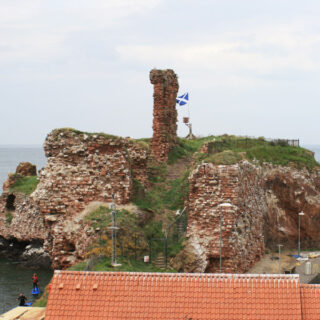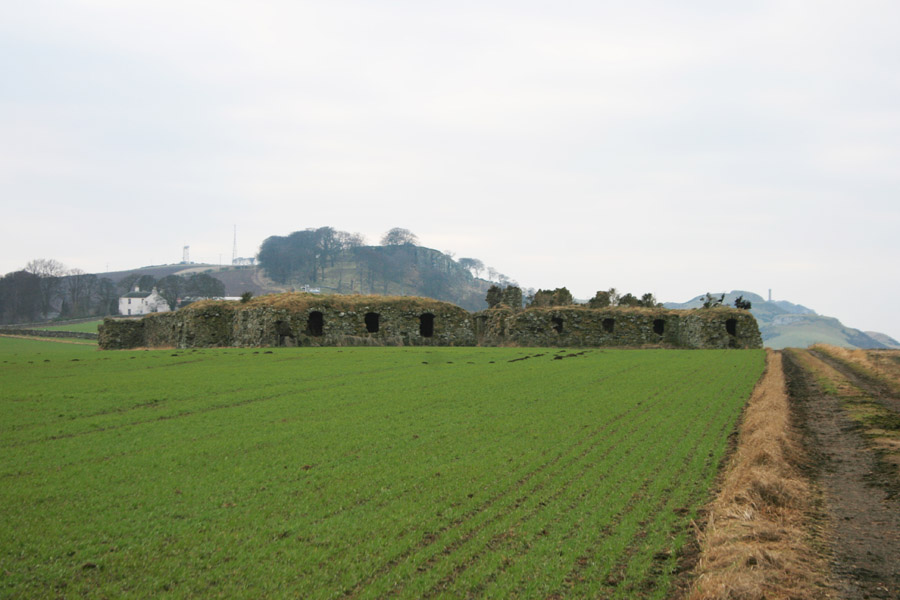

Barnes Castle is an unfinished late 16th century castle that is built on an unusual axial plan.
There was evidently an earlier castle on the site as Eastbarns is included in a list of towers destroyed by an English force under the Earl of Hertford on the 16th of April 1544, along with Stevenson, Markle, Traprain, Kirklandhill, Hetherwick and Belton.
Sir John Seton of Barnes, a diplomat at Philip II of Spain’s court and later James VI’s Treasurer of the Household and a Lord of Session, began building a replacement Barnes Castle in the late 16th century, but his death in 1594 put an end to the building work, and the castle was never completed.
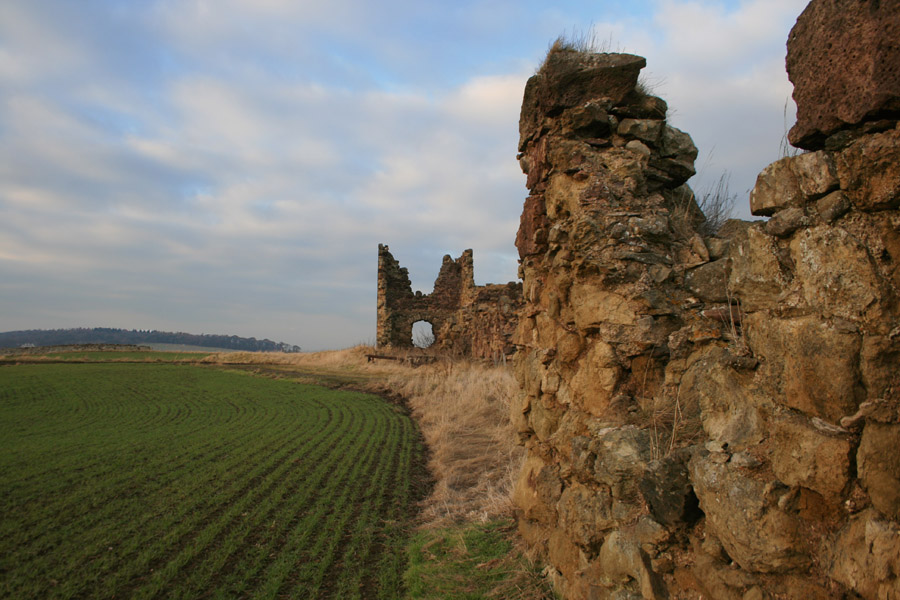
Barnes Castle is built on a north-east to south-west axis, and overall is rectangular in shape, measuring 50m by 39m. At each corner is a large square tower, and on the walls between them are smaller towers – two on the north-west, one on the south-east, and one forming the entrance gate on the south-west wall.
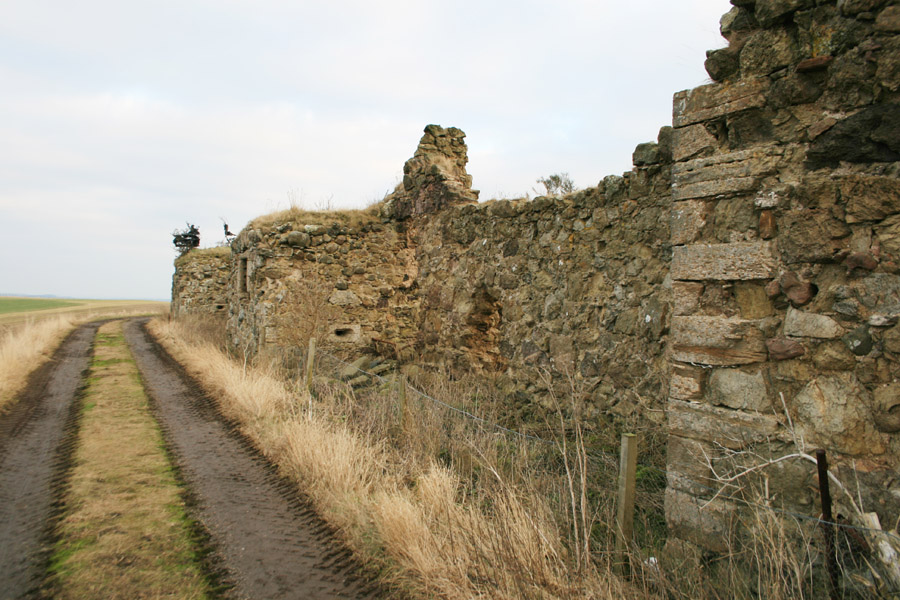
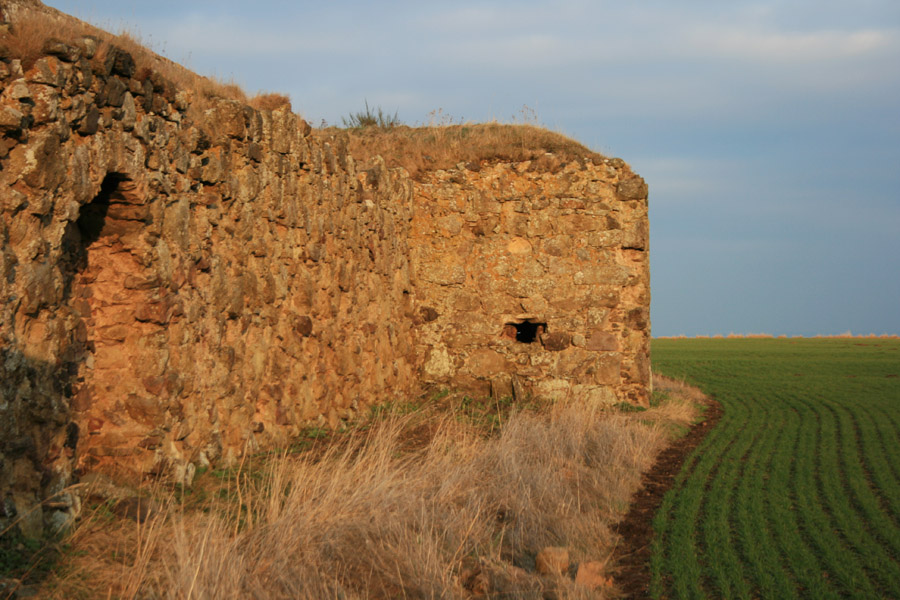
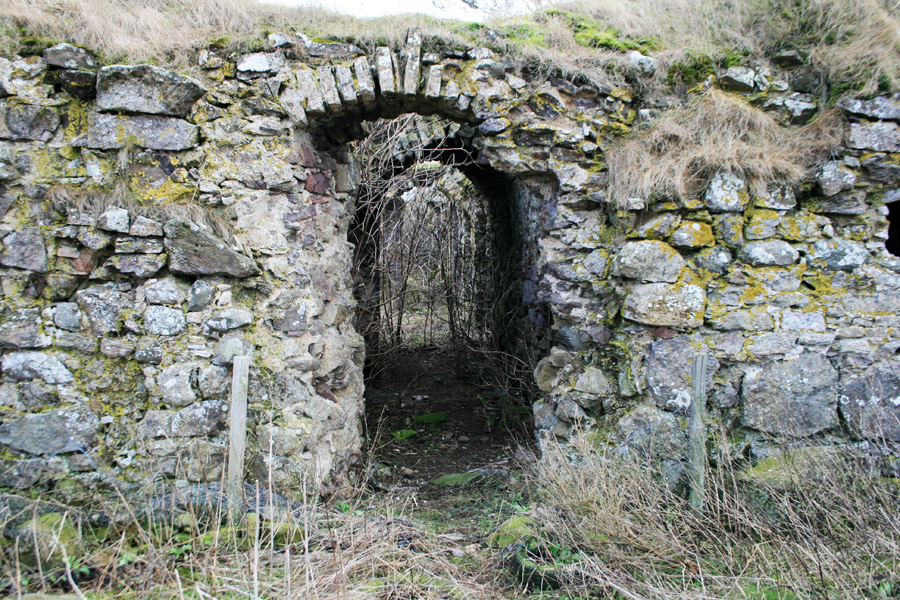
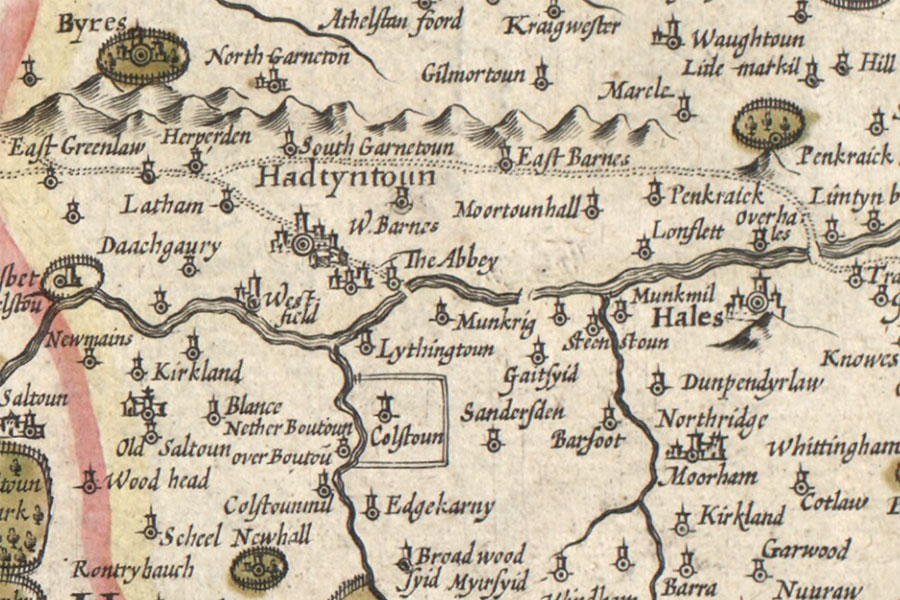
Hendrik Hondius, Amsterdam, 1630map image courtesy of NLS
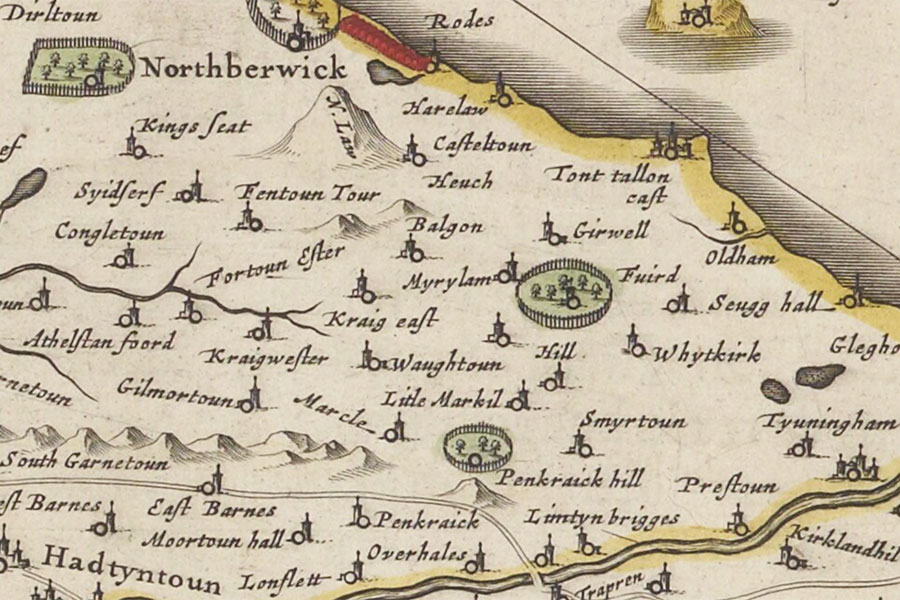
Joan Blaeu, Amsterdam, 1654map image courtesy of NLS
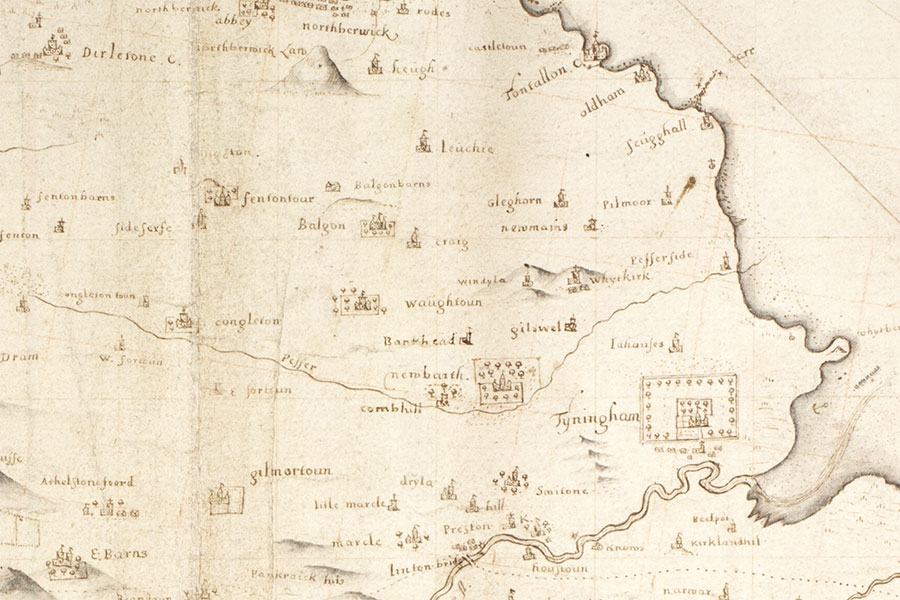
John Adair, 1682map image courtesy of NLS
Barnes Castle is now used as a farm store for nearby Barney Mains.
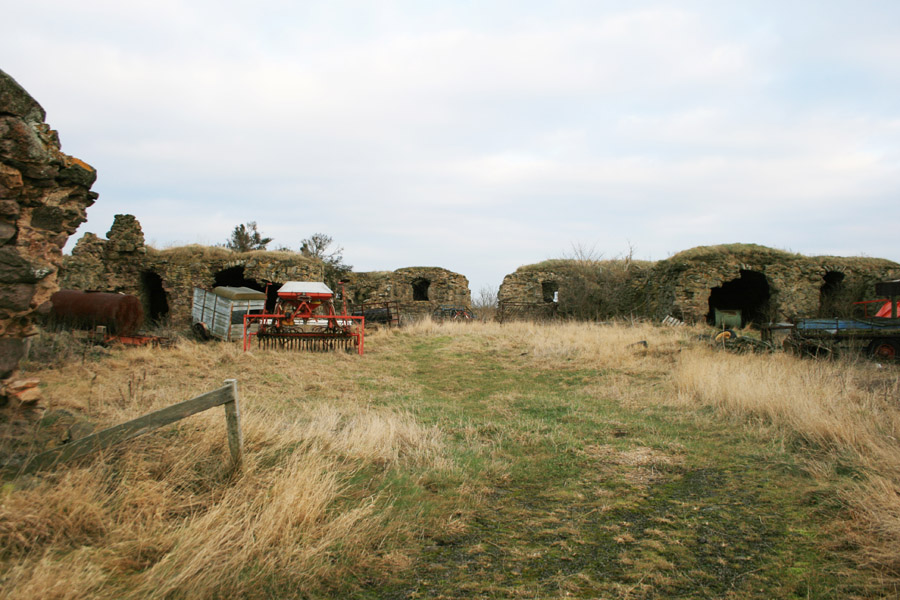
Alternative names for Barnes Castle
Abbey Grange; Barney Vaults; E. Barns; East Barnes; Eastbarns; The Vaults; The Vouts
